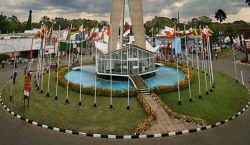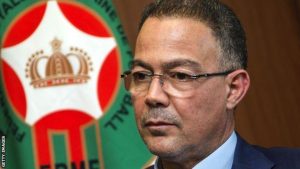


Fouzi Lekjaa in historic FIFA Council bid
Lekjaa’s candidacy, the first ever such bid from a Moroccan football official, will be tabled at the next General Assembly of the Confederation of African Football (CAF) scheduled to take place in Rabat on March 12, 2021.
Clinching a sit on the FIFA council would be yet another feather on the ace administrator’s cap, as he already holds key positions domestically and on the continent.
He is the first Vice-President of CAF, Chairman of the Finance Committee of CAF, the Vice-Chairman of the Organising Committee of Inter-clubs Competitions and Management of the Club Licensing System within CAF in addition to sitting on the Governance Committee of FIFA.
Lekjaa was also a key figure when the idea to reflect on the development of football infrastructures in Africa was first conceived. The initiative became a reality after a CAF seminar, held in association with FIFA, last January in Rabat.
Infrastructural development has been a hallmark of Lekjaa’s stay at the helm of Moroccan football. Under his watch, Morocco refurbished the National Maâmoura Football Center, rechristening it to the Mohammed VI Football Complex after a MAD 630 million (US$65 million) makeover.
Constructed on a 29.3-hectare plot, the Mohammed VI centre is a 66-room behemoth which features four natural grass football fields, three artificial turf football fields, a covered football pitch, a hybrid football field, a re-training room that can host futsal matches, an outdoor Olympic-sized pool, two tennis courts and a beach soccer field.
Built with the twin desire to attract foreign national teams to contribute to the development of national tourism as well as to boost the country’s international influence, the complex also features dining and relaxation areas, a 221-seat auditorium that can host various events as well as administrative buildings.
Other similar projects, prioritizing youth development, have also been initiated by Lekjaa, with training centres built in Berkane and Tetouan.
While projects like the complex have allowed to flex his administrative muscle, on the field, Moroccan football has reaped the fruits of his shrewdness in the boardroom.
As part of the robust policy he pursued since his election in 2014, the financial status of Moroccan sides has improved, with clubs, which were all placed under the National Control and Management Directorate, being given an annual subsidy of approximately $700 000.
The benefits for those participating in continental club competitions are even more lucrative, as they are given financial aid from the federation for travel and accommodation. In February this year, the Lekjaa led FRMF went the extra mile, chartering a plane for Raja Casablanca as they travelled to DRC to face TP Mazembe. Raja obliged and walked out of Mazembe’s usually impenetrable Lubumbashi lair with a credible 1-0 win.
Lekjaa has revolutionised Moroccan football clubs be structured at the administrative level while advising them to adopt a rigorous management policy.
The results from all that toil have been telling. Morocco had four teams in the semi-finals of this year’s Champions League and Confederations Cup, a feat that has not been accomplished before in the country’s footballing history. A combination of massive infrastructural projects, focused junior football development and financial support has helped the Moroccan game, with the league ranked at the best by CAF.